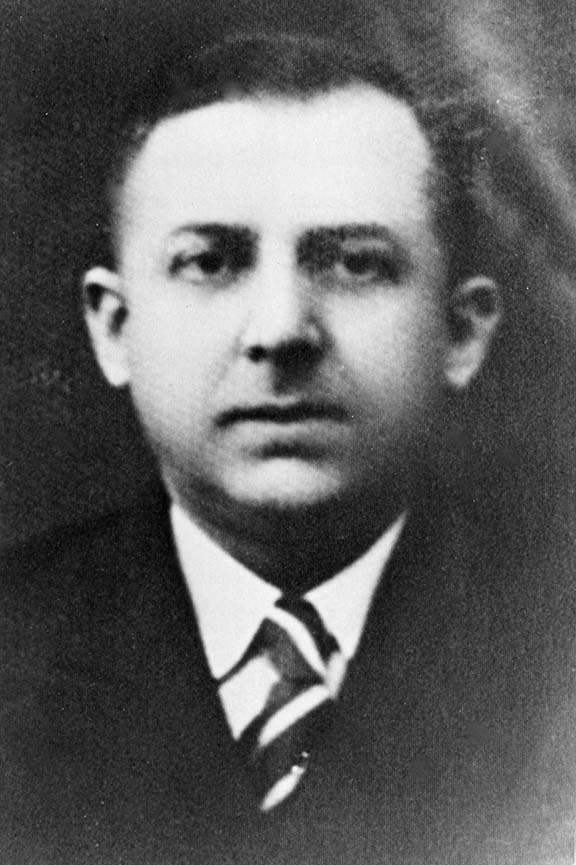Search for Names, Places and Biographies
Already layed Stumbling Stones
Suche
Tobias Feinstein * 1890
Gänsemarkt 33 (Hamburg-Mitte, Neustadt)
HIER WOHNTE
TOBIAS FEINSTEIN
JG. 1890
INTERNIERT 1944
BERGEN-BELSEN
ZWANGSARBEIT WEISSENBURG
KRANKENHAUS NÜRNBERG
TOT AN HAFTFOLGEN
30.6.1945
Tobias Feinstein, born on 12.5.1890 in Plunge/Lithuania, deported on 22.2.1944 to Bergen-Belsen concentration camp, died on 30.6.1945 in Nuremberg
Gänsemarkt 33
Tobias Feinstein came from Lithuania. He was born on May 12, 1890 in the village of Plunge as the son of Michael and Rachel Lea Feinstein. In his homeland he attended the Realgymnasium and subsequently completed a commercial apprenticeship in Memel. He then settled in Bad Nauheim and worked in a factory that produced dental prostheses.
In April 1922 Tobias Feinstein came to Hamburg. In 1924 or 1925, he set up his own "dental depot", first at Büschstraße 13, then at Gänsemarkt 33. In addition to dental prostheses, he sold dental and dental-technical supplies. On April 11, 1937, he married Rosa Natansohn in Kretinga, a town in western Lithuania.
Rosa Natansohn, the daughter of Abraham and Feige Natansohn, was born on August 30, 1905 in Pickeln, Lithuania. It is quite possible that the two knew each other from Memel, where Rosa had attended a commercial school after her school years. In 1935, she lived at Marktstraße 14 there and worked in Memel as a bookkeeper in a bank.
After her marriage, Rosa followed her husband to Hamburg. She now worked for him as an accountant and also served customers.
The Feinstein couple had Russian citizenship and, like all other Jews in Germany over the age of six, had to wear the yellow "Jewish star" from September 1941. Rosa Feinstein reported in her later restitution file that the objection that they had Russian passports did not release her and her husband from this obligation.
It was not possible to find out exactly when Tobias Feinstein was forced to give up his company. The company was "deleted" from the commercial register on January 1, 1942. The couple still lived at Gänsemarkt 33, but now as subtenants with Schulz. On October 15, 1943, Rosa and Tobias' only daughter Rahel Lea was born.
On February 22, 1944, the Feinstein couple was arrested in their apartment by the Gestapo and taken to the Bergen-Belsen concentration camp. Everything they owned was left behind at Gänsemarkt.
Beginning in 1943, the SS used part of the camp grounds in Bergen-Belsen as a "residence camp" for Jewish prisoners, so-called exchange Jews, who were intended to be exchanged for German civilian internees in enemy countries.
Soon after their arrival at the "Bergen-Belsen residence camp", Rosa and Tobias Feinstein were separated from each other. Rosa was taken with her daughter Rahel Lea to Vittel internment camp in northeastern France on March 8, 1944. They were housed in the Hotel Providence, where the Germans had set up the internment camp. Mostly American and British citizens were interned here, to be exchanged for Germans living in "enemy countries”. The hotel was located in a park and surrounded by barbed wire. On October 23, 1944, they were liberated by Allied troops. Rosa Feinstein experienced the end of the war in the French village of La Bourboule.
On the same day as Rosa, Tobias Feinstein also had to leave Bergen-Belsen and was taken to the internment camp Wülzburg near Weißenburg in Bavaria, where Tobias Feinstein still experienced the liberation by American troops. On May 12, 1945, he was admitted to the General Hospital in Nuremberg, where he died on June 30, 1945, at the age of 55, of a "peeling blister disease" he had got during his imprisonment.
Rosa Feinstein left Marseille for Palestine/Israel with her daughter in April 1949.
In 1999, she deposited memorial leaves at Yad Vashem in Israel for her late husband and her older brother Moses Moshe Natansohn (b. 1899), who was murdered in the Kaunas (Russian Kowno, German Kauen) ghetto in occupied Lithuania in April 1943.
Translation by Beate Meyer
Stand: January 2022
© Susanne Rosendahl
Quellen: 9; StaH 351-11 AfW 30417 (Feinstein, Rosa); http://bergen-belsen.stiftung-ng.de/de/geschichte/konzentrationslager/austauschlager.html (Zugriff 6.12.2016); http://www.gedenkorte-europa.eu/content/list/490/ (Zugriff 6.12.2016); Yad Vashem, Zentrale Datenbank der Namen der Holocaustopfer Tobias Feinstein (Gedenkblatt) (Zugriff 6.12.2016); Yad Vashem, Zentrale Datenbank der Namen der Holocaustopfer Moses Moshe Natansohn (Gedenkblatt) (Zugriff 6.12.2016).
Zur Nummerierung häufig genutzter Quellen siehe Link "Recherche und Quellen".


